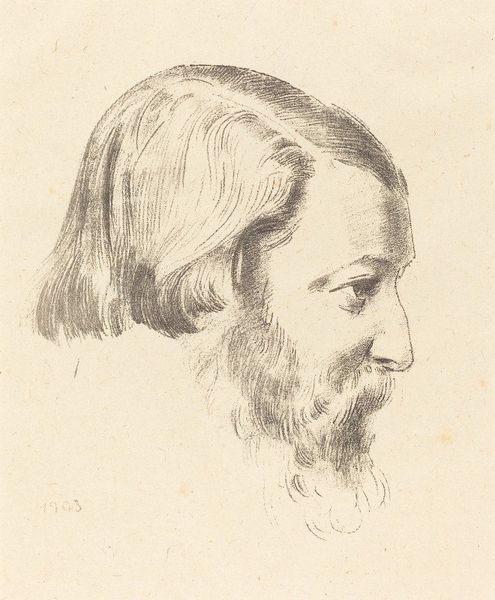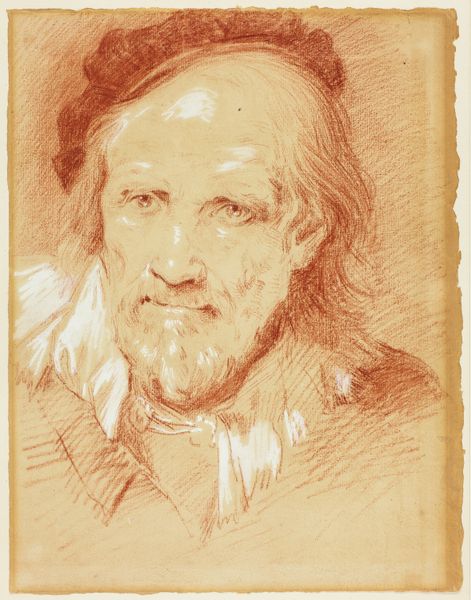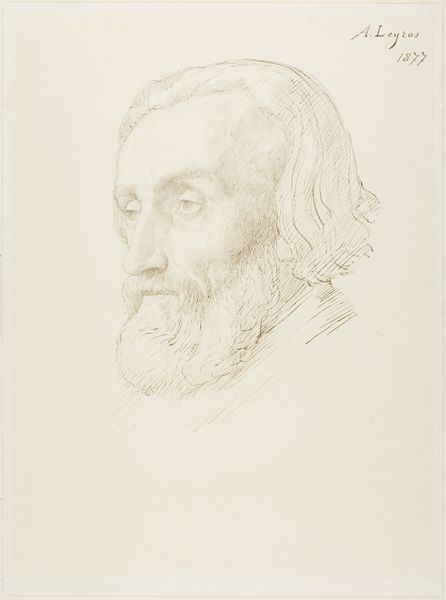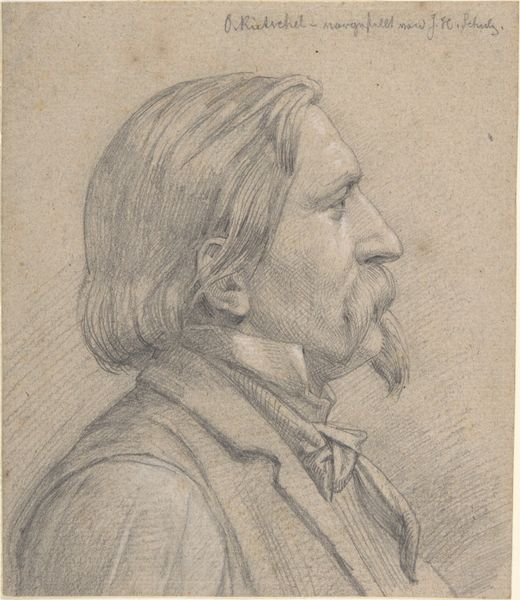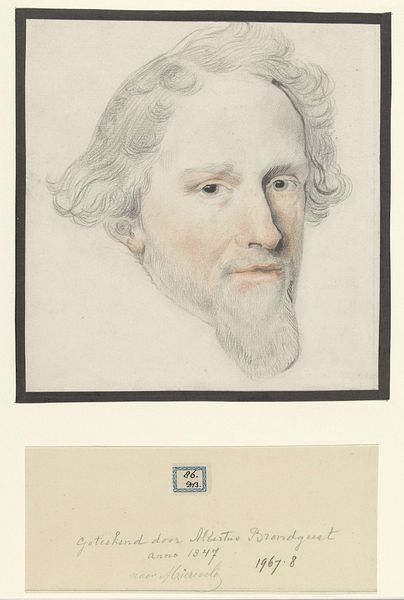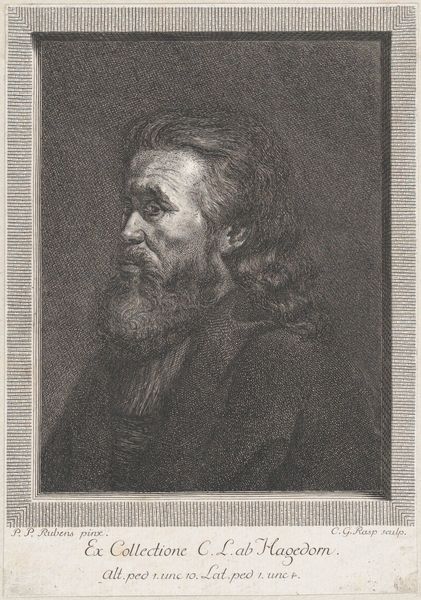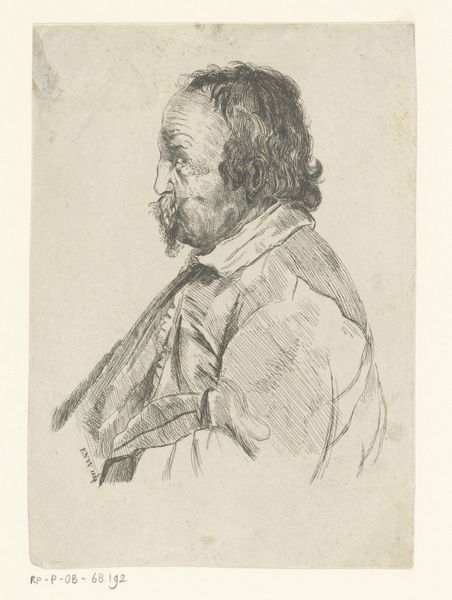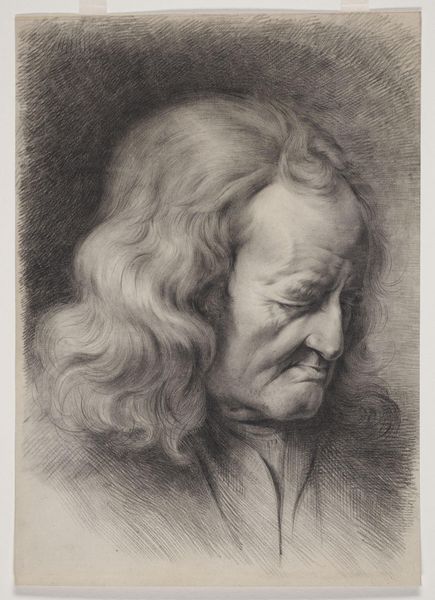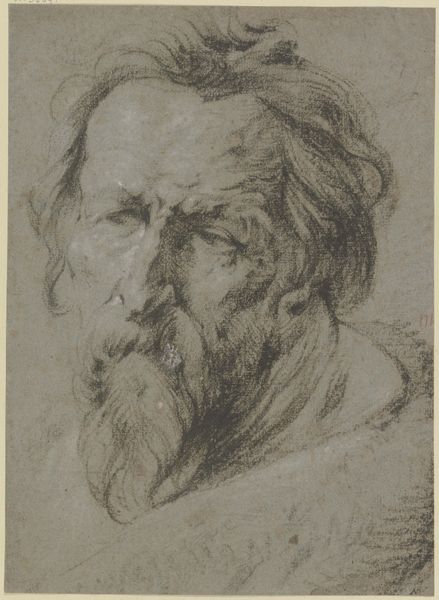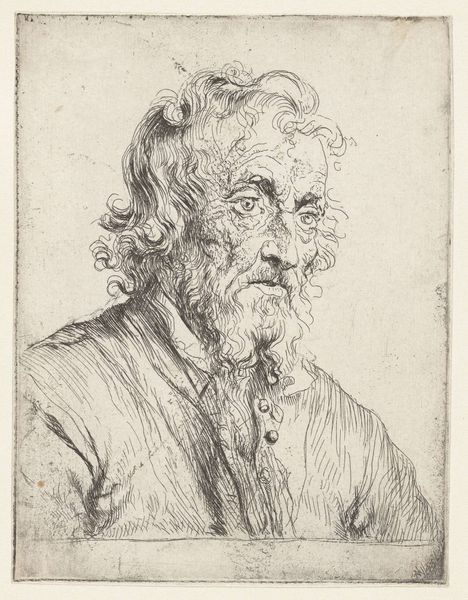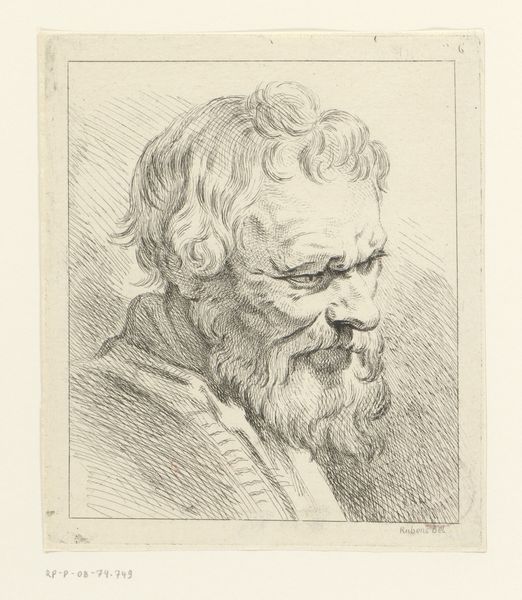
drawing, pencil
#
portrait
#
drawing
#
neoclacissism
#
facial expression drawing
#
caricature
#
portrait reference
#
pencil
#
animal drawing portrait
#
portrait drawing
#
facial study
#
facial portrait
#
portrait art
#
fine art portrait
#
realism
#
digital portrait
Dimensions: height 210 mm, width 185 mm
Copyright: Rijks Museum: Open Domain
Editor: This is Albertus Brondgeest's "Portret van Filips Willem, prins van Oranje-Nassau," created sometime between 1796 and 1849. It’s a pencil drawing. I find the texture fascinating—especially in the beard. What do you see in its formal qualities? Curator: Observe the artist's deliberate rendering of light and shadow. Notice how the pencil strokes coalesce to construct the form of the face, beard, and hair. The modulation of tone models the planes of the prince’s face, articulating its underlying bone structure. How does the composition affect your perception? Editor: I notice the close cropping that puts focus squarely on his face. But are we meant to read the limited color palette as intentional, or a restriction? Curator: Color functions structurally; note the chromatic restraint which contributes to a classical severity characteristic of Neoclassicism. The subtle blush on the cheeks seems to activate the grayscale, animating the representation. What does this portrait communicate without vibrant colors or dynamic settings? Editor: It creates a sense of directness, like unadorned truth. Perhaps the artist wished to project a sense of gravitas using solely line and tone? I appreciate seeing how much is communicated by such a limited formal vocabulary. Curator: Exactly! Brondgeest harnesses a reduction of visual components to deliver an articulate portrait; we recognize that form itself creates significant content.
Comments
No comments
Be the first to comment and join the conversation on the ultimate creative platform.
